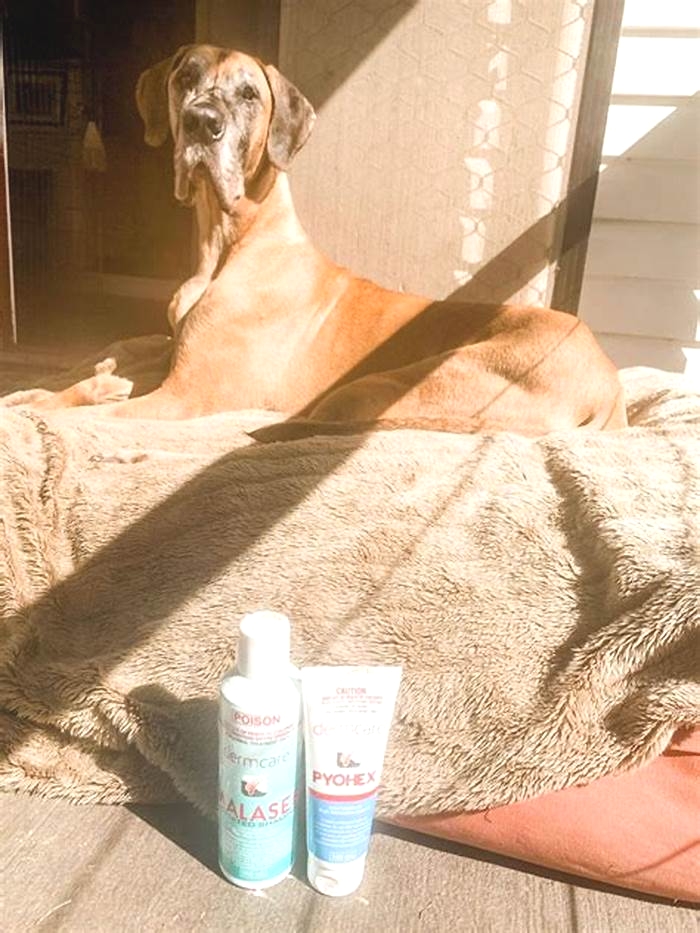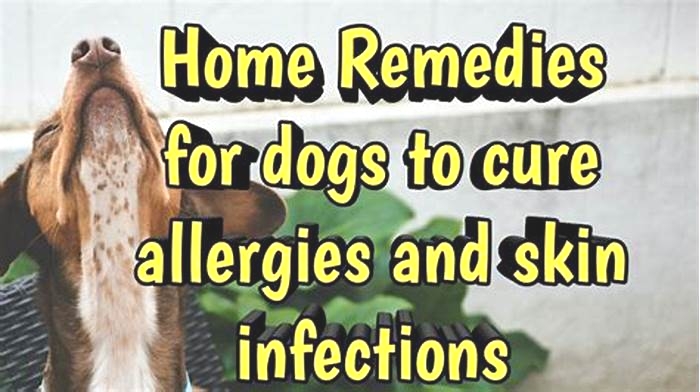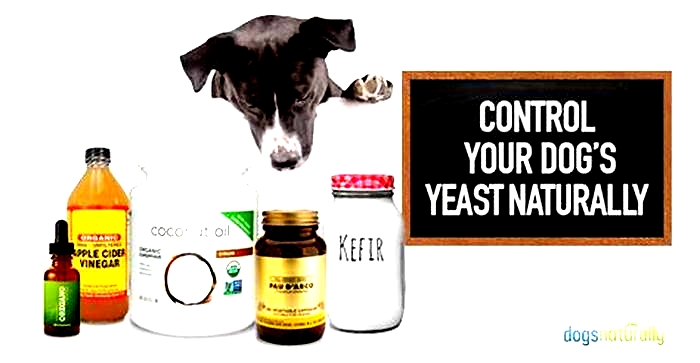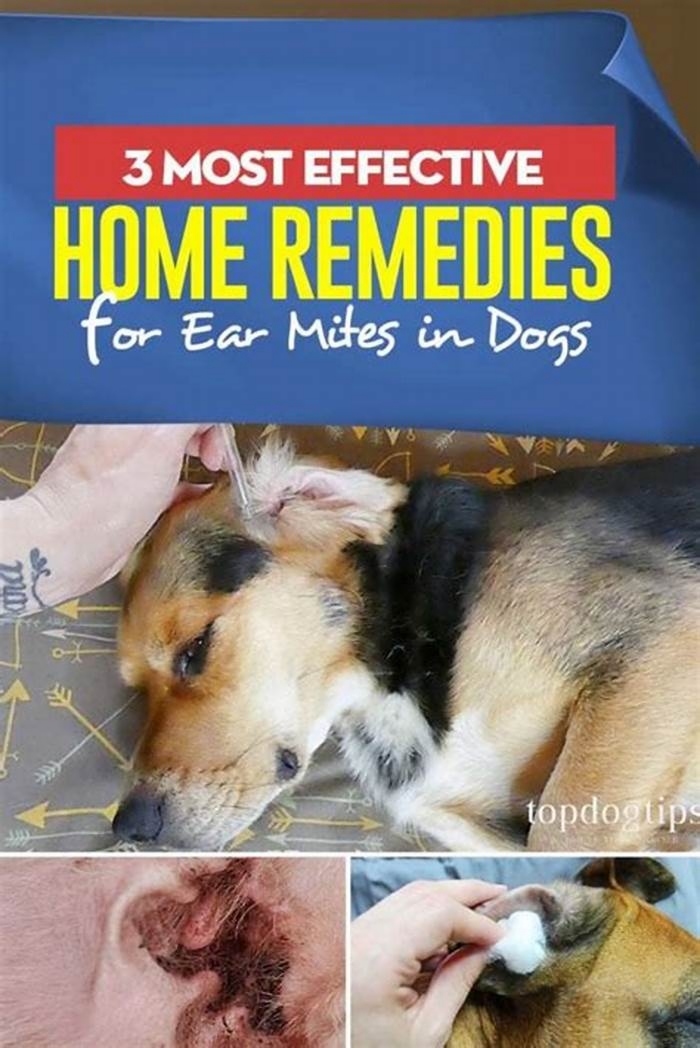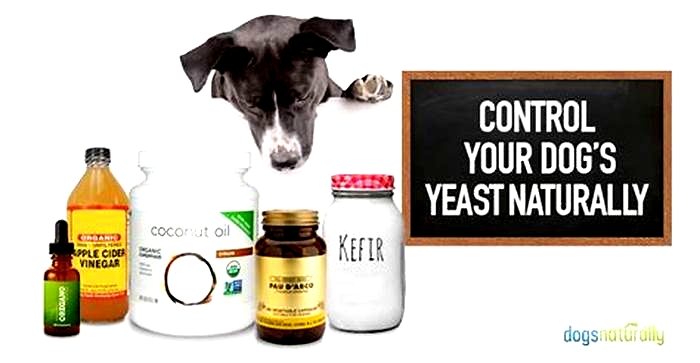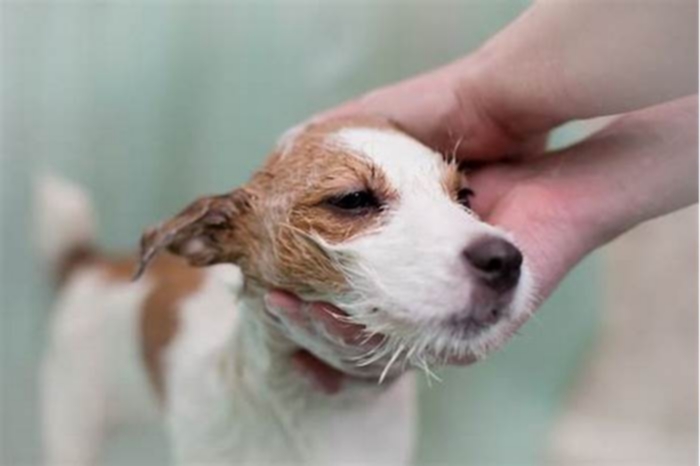How to naturally treat seborrhea in dogs
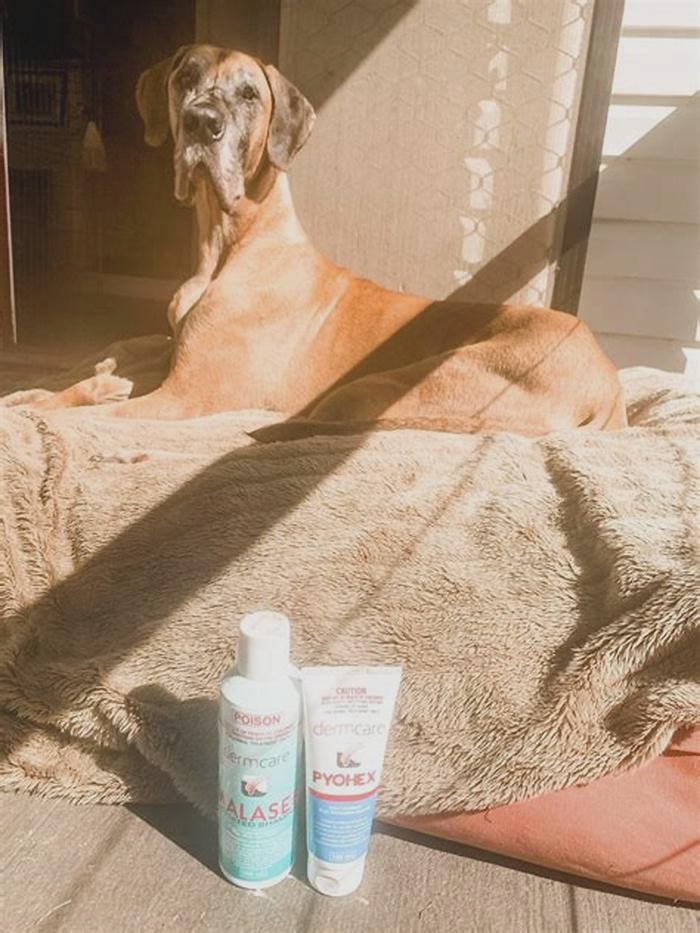
Seborrhea In Dogs: Causes, Diagnosis, Treatment & More
Is your dog greasy, itchy, or smelly at the moment? If so, he might have a condition called seborrhea. Its always important to get your veterinarian to examine your dog as there are many things to consider when treating this condition. Lets explore these in more detail and what causes canine seborrhea in the first place.
What Is Seborrhea In Dogs?

Seborrhea, also known as seborrheic dermatitis, is a skin disease that commonly affects dogs. It is a condition that affects areas of skin that are rich in sebaceous (oil-producing) glands. These glands either go into overdrive, producing too much sebum, or their function becomes reduced, leading to dry and irritated skin.
People can also suffer from similar conditions, including seborrhea capitis, which is seborrhea of the scalp (causing dandruff and cradle cap in infants).
What Causes Seborrhea?
There are many different reasons why your dog might develop seborrhea. This condition can be either primary or secondary to something else thats going on.
Primary Cause Is Inherited
Seborrhea can be an inherited condition, with the exact cause undetermined (also known as idiopathic). It is quite rare, but some breeds are more prone to idiopathic seborrhea than others, including American Cocker Spaniels, English Springer Spaniels, German Shepherds, Golden Retrievers, West Highland White Terriers, Basset Hounds, and Shar-Peis. Most of these dogs have non-itchy skin.
Secondary Suggests An Additional Health Concern
Secondary seborrhea occurs due to underlying health conditions andmay or may not be itchy, depending on the cause.
The following conditions can make seborrhea more likely to occur as a secondary problem:
- Allergies
- Parasites such as mites and fleas
- Hormonal conditions such as hypothyroidism
- Fungal infections
- Obesity
- Dietary deficiencies
What Does Dog Seborrhea Look Like?
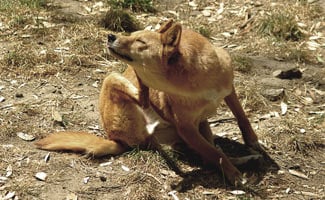
There are two types of seborrhea in dogs, seborrhea oleosa (oily seborrhea) and seborrhea sicca (dry seborrhea). Most dogs suffer from a combination of both types, so the symptoms can be a mixture of dry and greasy skin.
Here are some symptoms of canine seborrhea to be aware of:
- Large flakes of dry skin (dandruff), often found on your dogs face, back, and sides. It may also be seen on your dogs bedding.
- Red, inflamed skin which is excessively itchy.
- An unpleasant yeasty odor, caused by the grease from oily patches and any secondary infections (bacteria and yeast can worsen odors).
- Crusty thickened areas on the skin.
- Hair loss (alopecia).
How Is It Diagnosed?
Your veterinarian will start by examining your dog for classic signs of seborrhea. As well as checking your dogs skin, they will also examine the rest of your pet to check his overall health status.
Depending on their findings, they might suggest some additional tests, which could include:
- A blood test to check your dogs organ function and to check his thyroid hormone levels
- Samples from the skin to culture for any bacterial or yeast infections
- Skin scrapes to examine under the microscope for parasites
- Biopsy of the skin to look for deeper infections, cancer, and other diseases
If all of the possible secondary conditions are ruled out, then a diagnosis of primary (idiopathic) seborrhea is made. Animals with genetically related primary seborrhea may develop this condition at a young age.
How To Treat Seborrhea In Dogs
Seborrheic dermatitis treatment revolves around treating the symptoms and curing the underlying cause (in the case of secondary seborrhea).
Shampoo

The most common treatment used in the management of seborrhea is medicated antiseborrheic shampoos. These seborrhea dog shampoos help to gently lift the scurf on your dogs skin and reduce the risk of additional flakes and crusts forming. They cleanse your dogs fur and also help to reduce secondary infections.
According to the Merck Veterinary Manual, Shampoo therapy can decrease the number of bacteria and yeast on the skin surface, the amount of scale and sebum present, and the level of pruritus; it also helps normalize the epidermal turnover rate.
Ingredients commonly found in these shampoos include coal tar, salicylic acid, benzoyl peroxide, and fatty acids. The exact shampoo prescribed may depend on the degree of seborrhea your pet has. You may use other products in conjunction with shampoos, such as sprays and moisturizers (emollients), to help prevent your dogs skin from drying out. Your veterinarian will advise you on how frequently to use both shampoos and moisturizing products.
Other Options
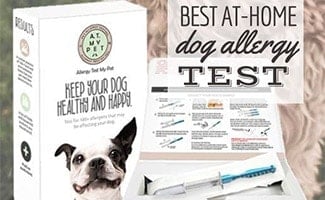
Other medications that you can use in the treatment of seborrhea include measures to treat the underlying cause of the disease:
- Anti-parasitic products to treat ectoparasites like fleas and mange mites.
- Treatment for hormonal conditions like hypothyroidism will consist of oral medications and monitoring with regular blood tests.
- Treatment of underlying skin allergies. You can manage allergies in a multitude of ways, depending on what the underlying trigger is. Some dogs will require strict hypoallergenic diets. Others may require immunosuppressive drugs like ciclosporins or glucocorticoids. Your veterinarian will discuss the various options available for your pet. To get a clear picture of your dogs allergies, you might want to take an at-home dog allergy test.
- Antibiotic and antifungal medications to treat any secondary infections.In cases of primary idiopathic seborrhea, one study has suggested that oral retinoid therapy may be helpful in its treatment.
- Vitamin A supplementation is also used in some cases.
Are There Any Home Remedies?
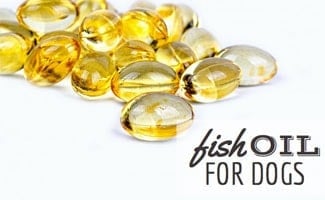
You should always follow advice from your veterinarian about the treatment of your pets condition. Discuss any canine seborrhea treatment home remedies with your veterinarian these must not take the place of any prescribed medications. However, the following natural therapies may be helpful in the management of seborrhea.
- Omega-3 fatty acid supplements help to act as natural anti-inflammatories and help support healthy skin and coat conditions.
- Other dietary supplements may be useful to supplement vitamins such as A, C, and E to help with general immunity, health, and skin conditions.
- You can apply coconut oil to itchy areas to help soothe and moisturize. Choose an unrefined oil, known as virgin coconut oil.
- Regular bathing with soothing oatmeal-based shampoo may help irritated skin.
Never use human shampoos or products on your pet unless with express agreement from your veterinarian.
What Is The Prognosis For Canine Seborrhea?
Some cases of canine seborrhea can be cured with appropriate treatment if you seek help promptly. Treating the underlying cause of seborrhea can lead to a full resolution in many cases.
However, if your dog suffers from the less common primary idiopathic seborrhea, he may require long-term management strategies for his skin. Symptoms can usually be kept under control in these cases if you follow your veterinarians recommendations.
Can I Prevent It?
You cant prevent genetically inherited idiopathic seborrhea. However, not breeding from animals that suffer from seborrhea and buying from good breeders that wouldnt reproduce from affected animals, can reduce the risk of seborrhea in your dog. If youre buying a puppy from a breed prone to seborrhea, make sure to meet both of the parents and give them a once-over to reduce the risk of purchasing a puppy with problems.
You can lessen the risk of other dogs getting seborrhea by using parasite preventatives, feeding a good quality commercial diet made to AAFCO standards, maintaining a healthy body weight, and managing any underlying allergies as recommended by your veterinarian.
Does Your Dog Have Other Skin Problems?
Is your dogs skin frequently itchy or rashy? Dogs suffer from a host of skin problems in addition to seborrhea.If this sounds like your pup, he could be suffering fromskin allergiesfrom something in his food or environment.Skin infections are also common in dogs, so you may want to know the signs of infection before it leads to seborrhea.
You must take your dog to your veterinarian if you suspect he has seborrhea, an infection, or allergies to receive a proper diagnosis and have appropriate treatment, which depends on the cause of their condition.
Tagged With: SkinHome Remedies for Seborrhea in Dogs
Seborrhea in dogs, often referred to as dog dandruff, is a skin condition that causes flaky skin and greasiness of the skin and hair. The disorder is very common and can lead to secondary infections on the skin.AnimalWised want to help you fight seborrhea but, in particular, inform you of the home remedies for seborrhea in dogs that can help you on your way to a cure. Let's review them.
Types of seborrhea
We can identify 3 types of seborrhea:
- Seborrheic dermatitis: this is greasy seborrhea that, in general, is accompanied by an inflammation of the skin due to a serious infection.
- Dry seborrhea or canine dander: As the name implies, it is an excessive desquamation of the first layer of skin. Very common in breeds such as German Shepherd or English Setter, among others.
- Oily seborrhea: Very common in breeds such as shar pei or basset hound or from complications of the previous stage where excessive production of fat is found in the animal's hair and skin. Greasy scars can be formed in certain areas. We must differentiate it from allergic dermatitis by fleas.
The first thing to consider in order to choose a treatment will be to pigeonhole what type of seborrhea needs treated. Since, dry seborrhea and oily seborrhea will not have the same treatment. We should always consult the vet but here we show some symptoms that we can observe in our dog that will guide us a little:
- Severe peeling seen during hair brushing.
- Grease accumulated on face, body folds, ears, perineal region, etc.
- Scaly skin that if removed can even bleed.
- A lot of itching.
- Excessive hair loss.
- Bad body odor.
Home remedies for dog dandruff
To start treating canine dandruff we should offer regular baths to our dog. We can use natural, chemical-free soap which preserves the pH levels of skin. It will also be imperative to keep the skin as moisturized as possible.
We will not use a hair dryer, as it will not only dry the hair but also the skin. Towels are the best allies in these cases. Daily brushing also stimulates the skin, so it is very important to do this regularly. This will naturally produce the essential oils of the skin and distribute them homogeneously throughout the body.
You should offer them quality water to hydrate them well, preferably bottled. And you should choose a very natural feed, with as much protein as possible.
You can supplement their diet with omega-3 and omega-6 fatty acids in food, which will help maintain their healthy skin and shiny hair without much effort. Olive oil and sunflower oil can also help in these cases. Use 1 teaspoon in small dogs and one tablespoon in large dogs a day.
Home remedies for oily seborrhea
As in the previous case, to treat oily seborrhea we will also need to give regular baths to our dog, but in this case, there are other preparations that will help avoid itching and decrease the oiliness of the skin.
We can make a homemade soap to treat this type of seborrhea with products very easy to find. To do this you must mix:
- 3 cups water
- 1 cup of baking soda (which will help exfoliate and moisturize their skin)
- 2 cups crushed natural oats
This mixture will help eliminate pruritus from the skin, generating total relief. It has anti-inflammatory and exfoliating properties but in a very mild form. We should start wetting the dog with warm water, then add the prepared homemade soap and then rinse with warm water again to avoid any remains. Then dry the towel thoroughly. This process can be repeated up to 1 time per week.
We can also make homemade soap by boiling a bunch of thyme (fresh or dried) or rosemary in a liter of water. Once the mixture is cool, we can do the same procedure as before to bathe them.
One final technique can be to wash very well a cup of white rice and to boil it until it almost turns into a thick paste. Once cool we can use it as a shampoo by massaging our dog's skin thoroughly before wetting and rinsing with warm water.
This article is purely informative. AnimalWised does not have the authority to prescribe any veterinary treatment or create a diagnosis. We invite you to take your pet to the veterinarian if they are suffering from any condition or pain.
If you want to read similar articles to Home Remedies for Seborrhea in Dogs, we recommend you visit our Home Remedies category.

